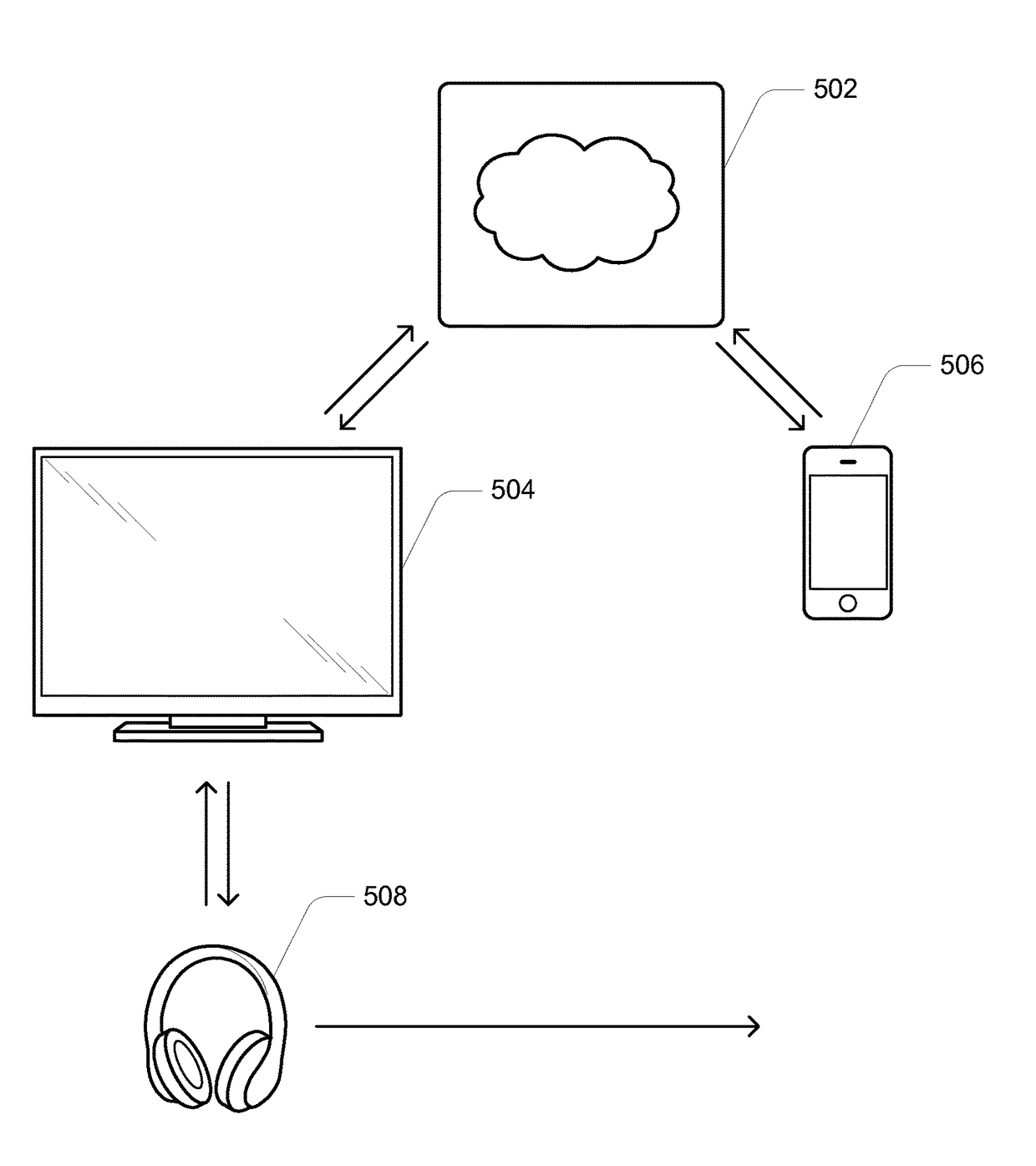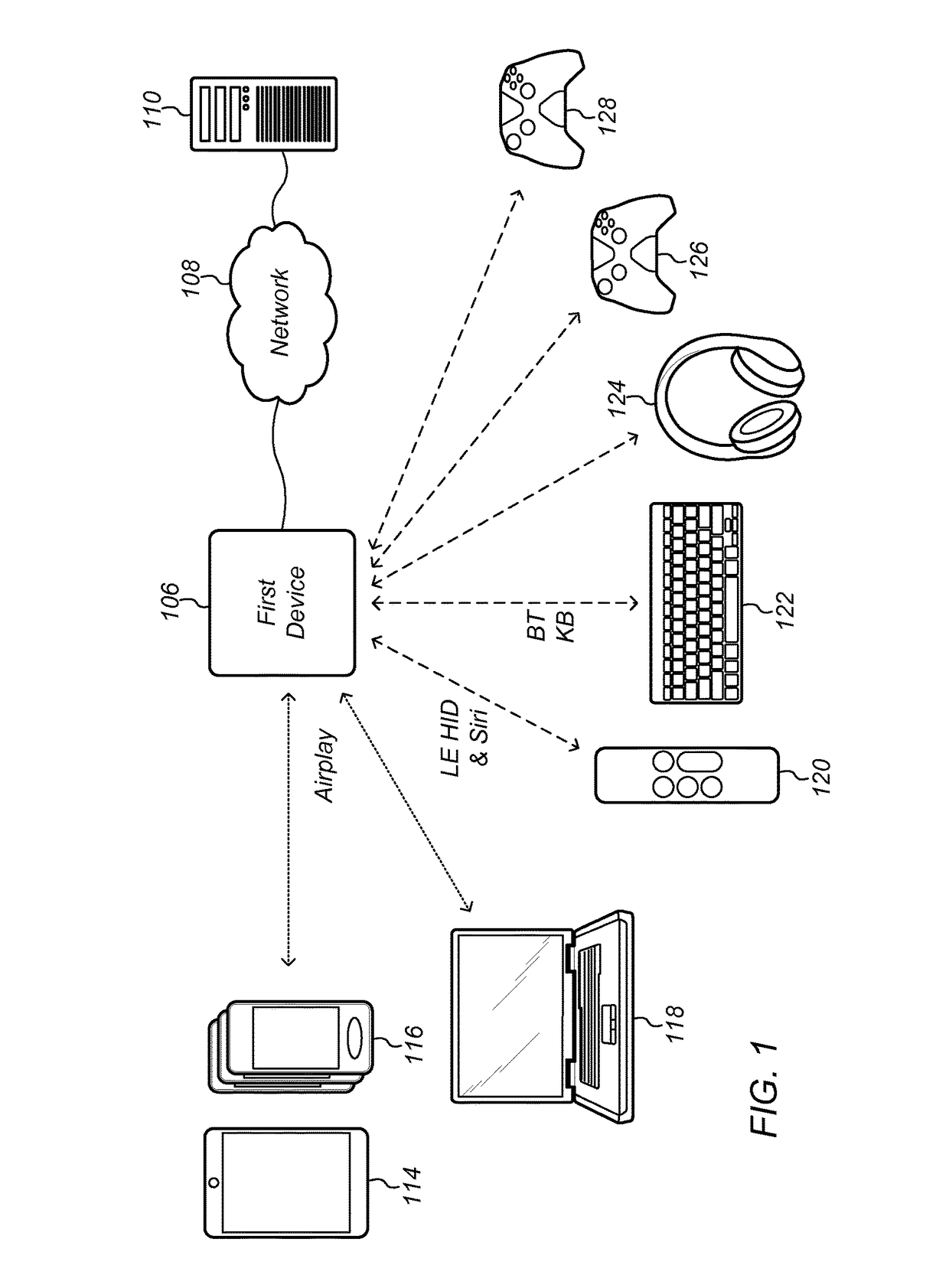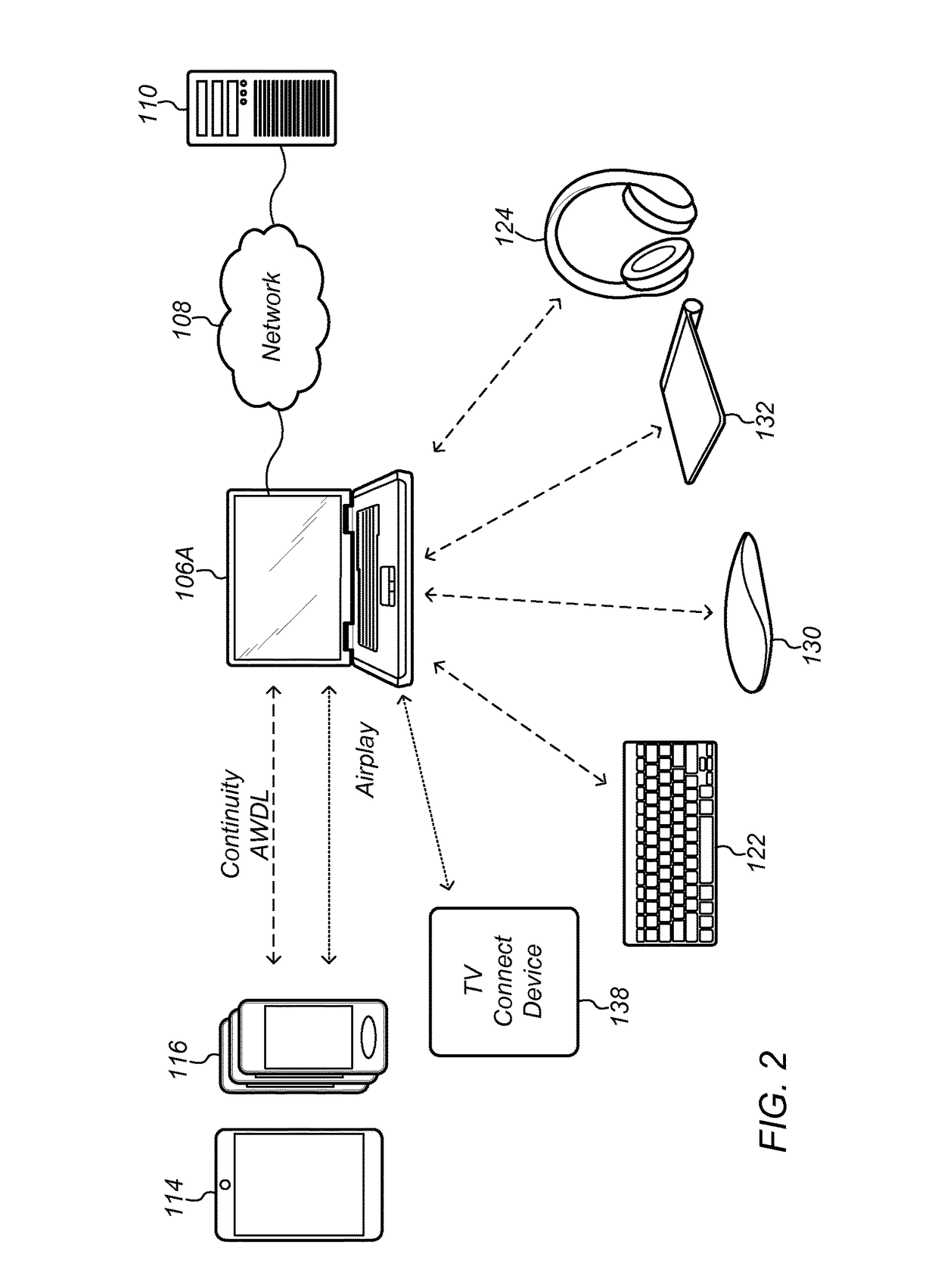Cloud-based proximity pairing and switching for peer-to-peer devices
a peer-to-peer device and proximity pairing technology, applied in the field of electronic devices, can solve problems such as inefficiency of third electronic devices (etc.) and achieve the effect of efficient transition
- Summary
- Abstract
- Description
- Claims
- Application Information
AI Technical Summary
Benefits of technology
Problems solved by technology
Method used
Image
Examples
Embodiment Construction
Acronyms
[0021]Various acronyms are used throughout the present application. Definitions of the most prominently used acronyms that may appear throughout the present application are provided below:
UE: User Equipment
RF: Radio Frequency
AP: Access Point
BT: Bluetooth
BTLE: Bluetooth Low Energy
BTLEA: Bluetooth Low Energy for Audio
TDD: Time Division Duplexing
TX: Transmission / Transmit
RX: Reception / Receive
LAN: Local Area Network
WLAN: Wireless LAN, also referred to as Wi-Fi
RAT: Radio Access Technology
RSSI: Received Signal Strength Indicator
Wi-Fi: Wireless Local Area Network (WLAN) RAT based on the Institute of Electrical and Electronics Engineers' (IEEE) 802.11 standards
Terms
[0022]The following is a glossary of terms that may appear in the present application:
[0023]Memory Medium—Any of various types of memory devices or storage devices. The term “memory medium” is intended to include an installation medium, e.g., a CD-ROM, floppy disks 104, or tape device; a computer system memory or random ac...
PUM
 Login to View More
Login to View More Abstract
Description
Claims
Application Information
 Login to View More
Login to View More - R&D
- Intellectual Property
- Life Sciences
- Materials
- Tech Scout
- Unparalleled Data Quality
- Higher Quality Content
- 60% Fewer Hallucinations
Browse by: Latest US Patents, China's latest patents, Technical Efficacy Thesaurus, Application Domain, Technology Topic, Popular Technical Reports.
© 2025 PatSnap. All rights reserved.Legal|Privacy policy|Modern Slavery Act Transparency Statement|Sitemap|About US| Contact US: help@patsnap.com



